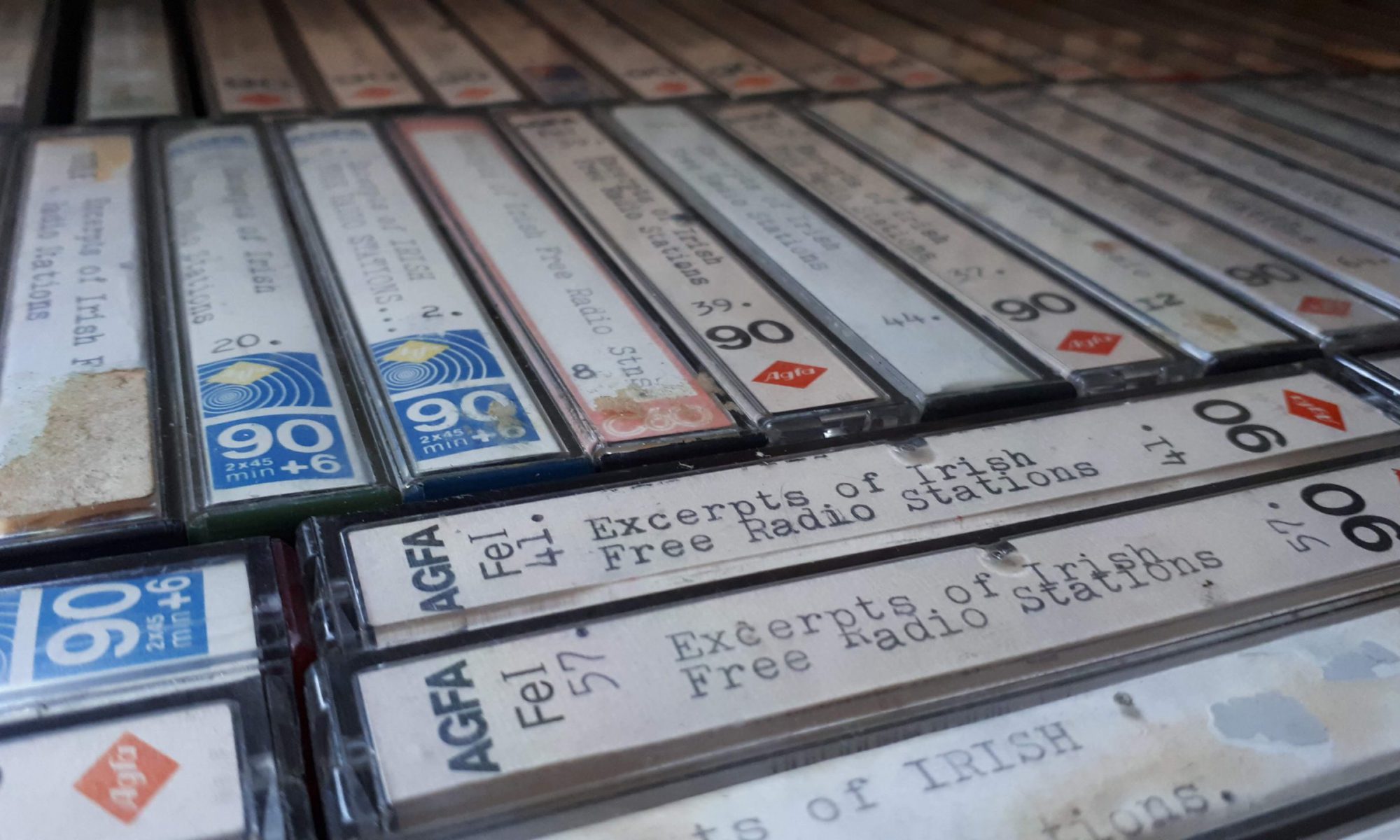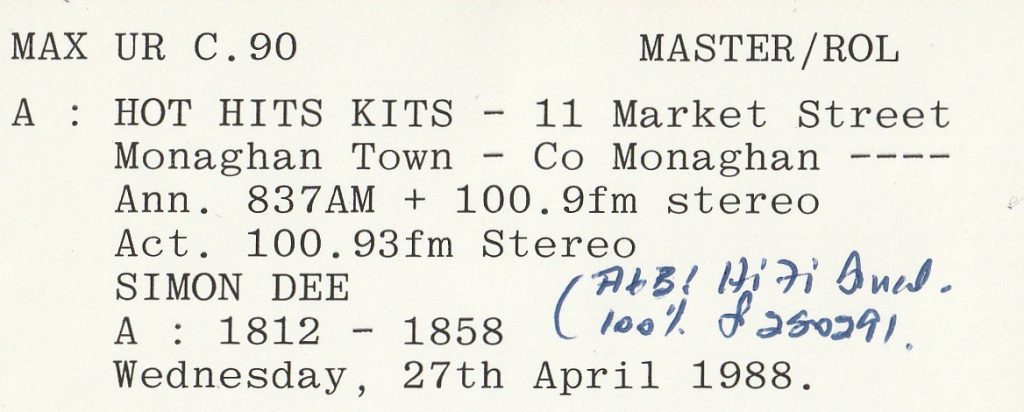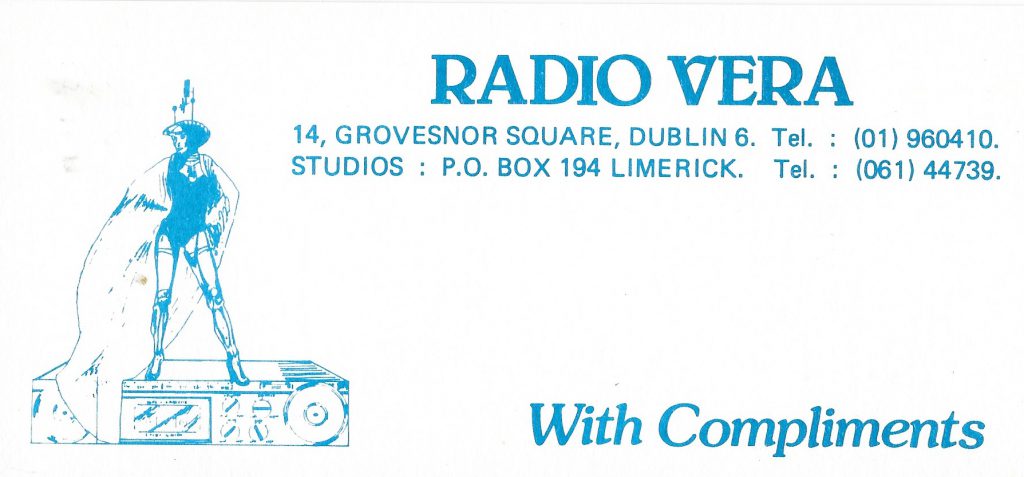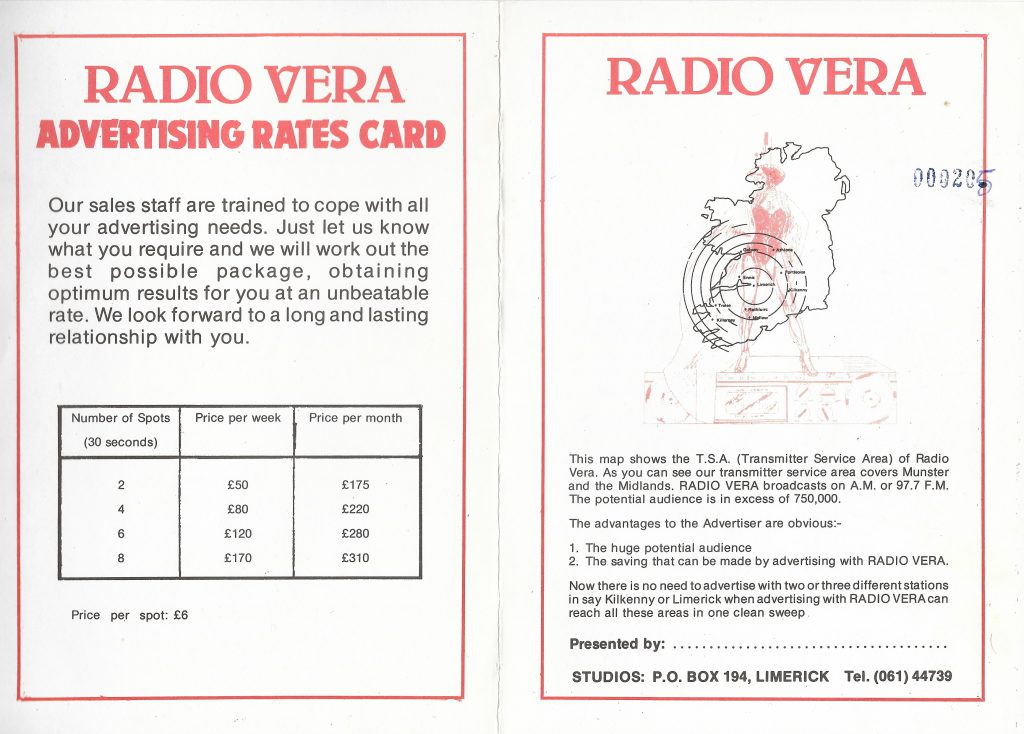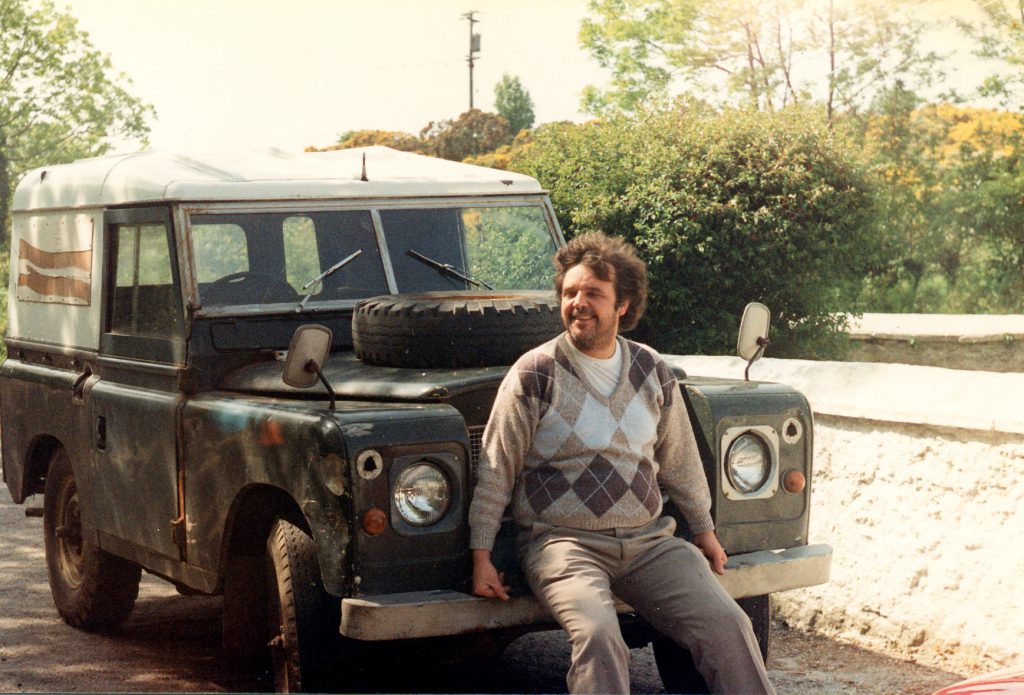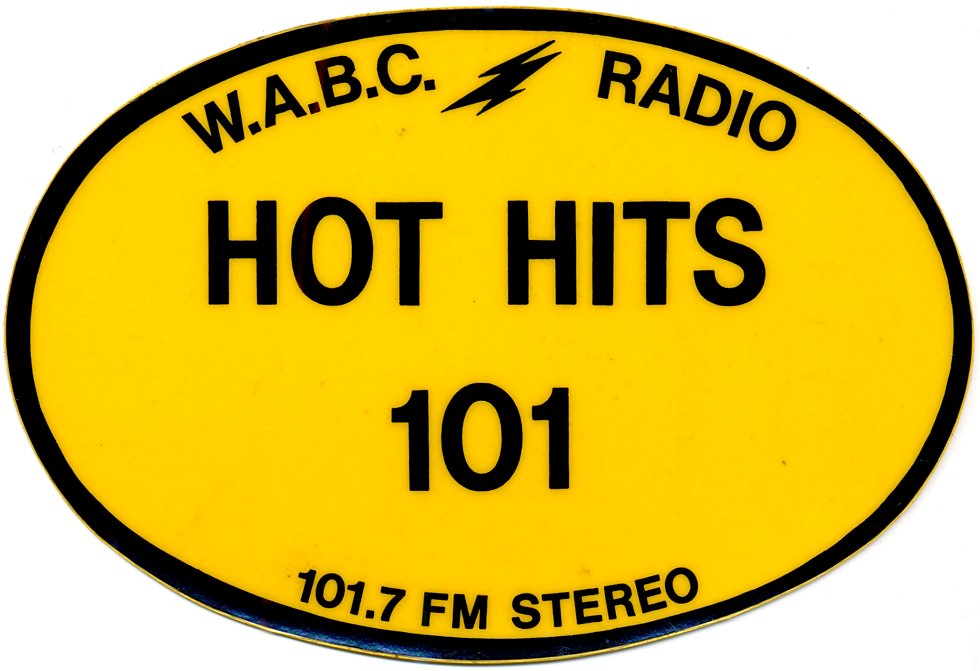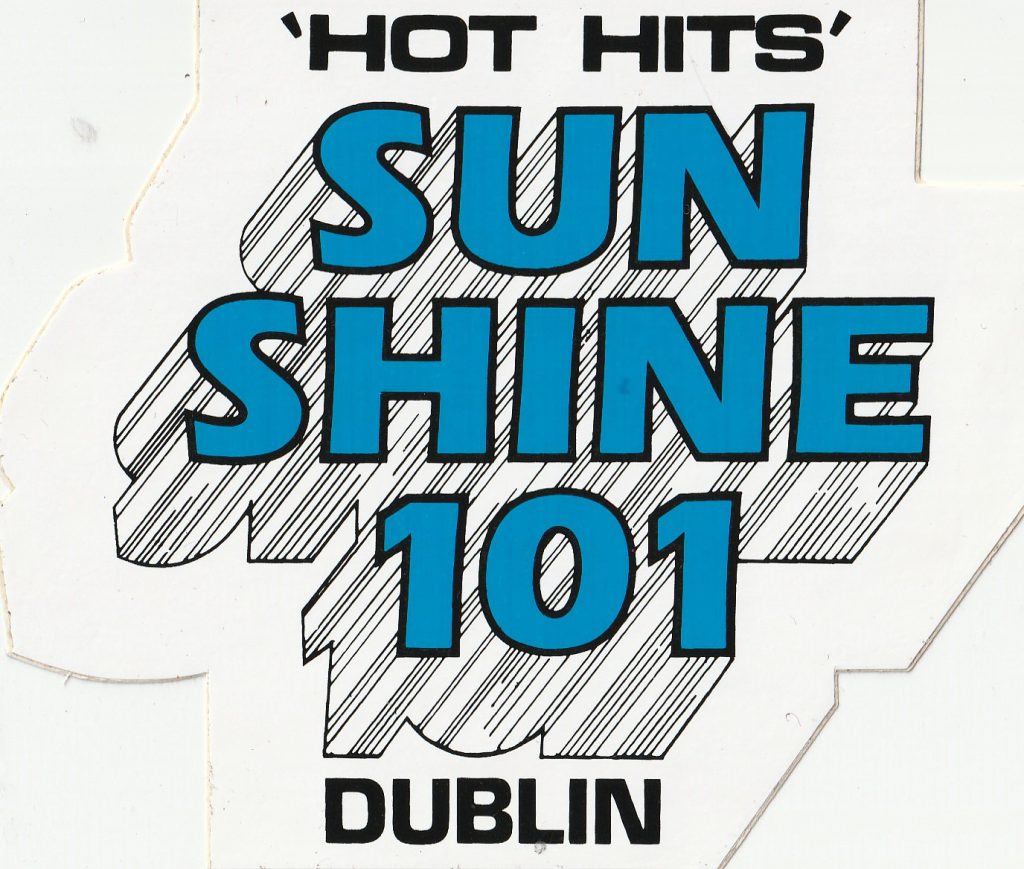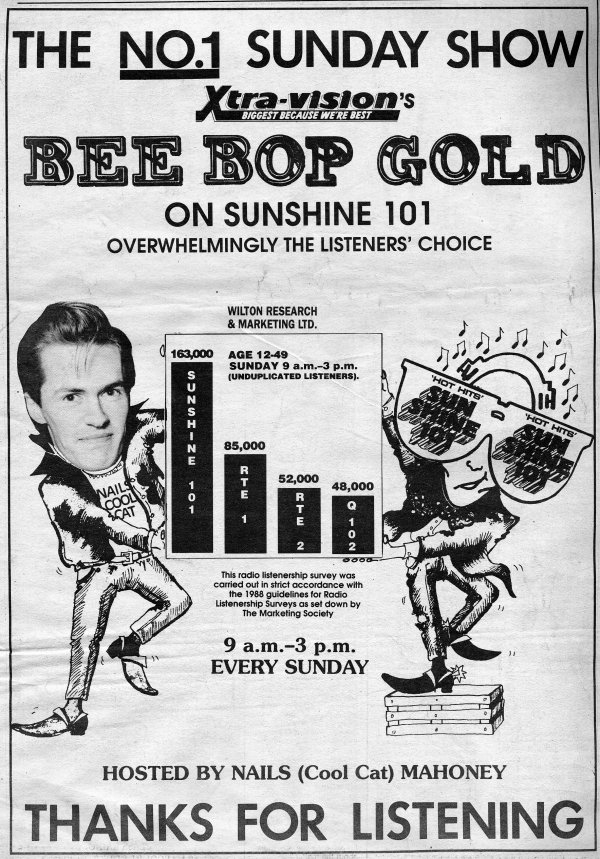Podcast: Play in new window | Download
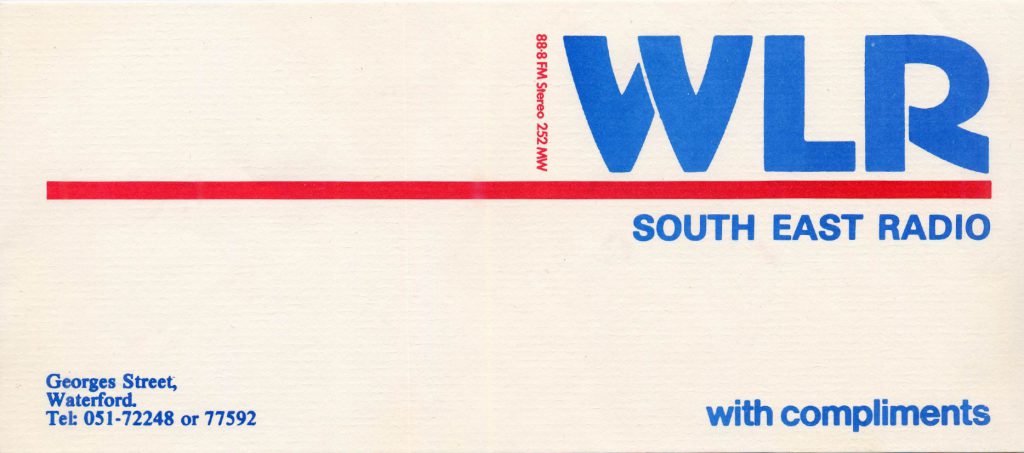
Waterford Local Radio (WLR) was one of Ireland’s most successful and long-running pirates, broadcasting from 1978 to 1988, and it was one of the few pirates to be licensed in 1989. This recording was made 48 hours before the pirate station closed down in line with new broadcasting legislation. On air is Seán Organ, formerly of Suirside Radio, who continues to broadcast on the licensed WLR FM today. News is read by Clodagh Walsh, who went on to work as a journalist in the new independent radio sector and RTÉ. Station idents cover Counties Waterford, Wexford and Kilkenny, reflecting WLR’s coverage area. There are references to the impending station closedown at 6pm on 30th December 1988 and a reminder to listeners to support WLR’s licence application, which had already been endorsed by over 100 community groups.
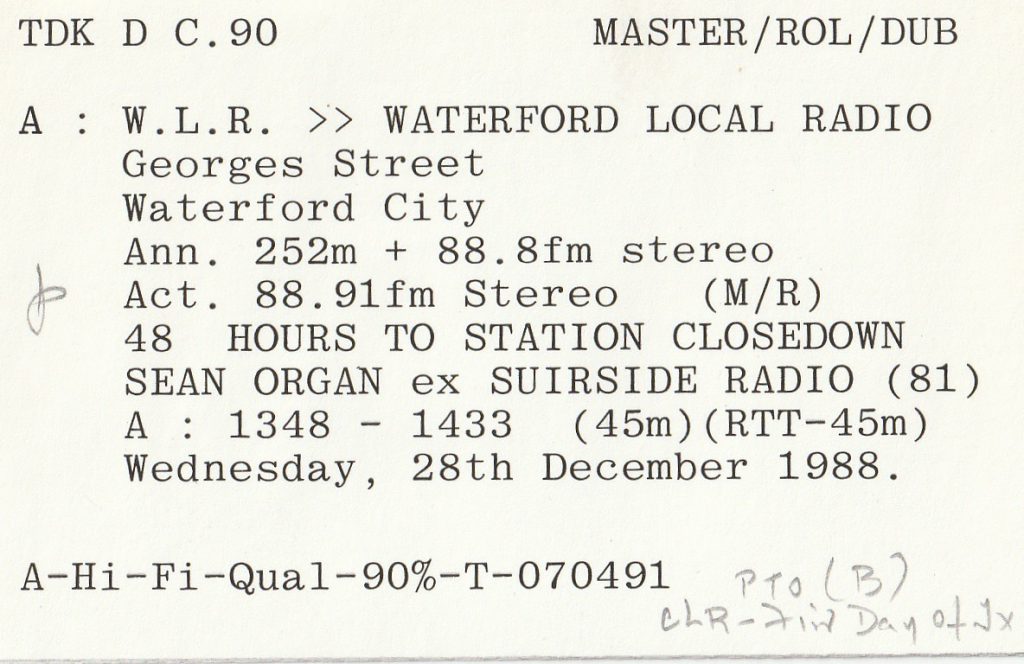
The tape was made from 88.9 FM on Wednesday, 28th December 1988 from 1348-1433. There is some wobble in the recording due to cassette degradation in places. It is from the Anoraks Ireland Tapes Collection, donated to us by Paul Davidson.
